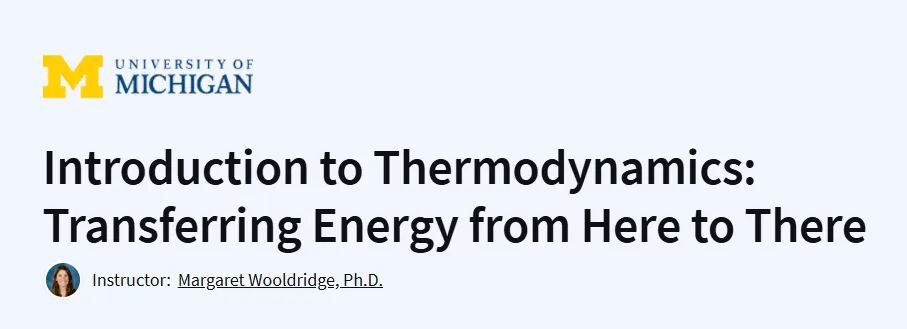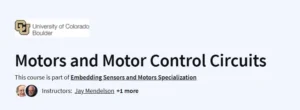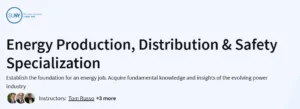What you will learn in Introduction to Thermodynamics Course
- Fundamental thermodynamic concepts (systems, properties, processes)
- First and Second Law of Thermodynamics
- Heat engines and refrigeration cycles
- Property diagrams (P-v, T-s) interpretation
- Phase change analysis
- Basic power plant components
- Energy efficiency calculations
Program Overview
Thermodynamic Foundations
⏱️ 2 weeks
- Covers system boundaries, intensive/extensive properties, and equilibrium states.
- Includes state postulate applications.
First Law Analysis
⏱️ 2 weeks
- Focuses on energy conservation, work/heat transfer, and enthalpy.
- Features closed/open system case studies.
Second Law Concepts
⏱️ 2 weeks
- Examines entropy, reversibility, and Carnot efficiency.
- Includes heat engine/refrigerator performance calculations.
Engineering Applications
⏱️ 2 weeks
- Teaches Rankine cycle analysis, combustion basics, and HVAC principles.
- Features power plant virtual tours.
Get certificate
Job Outlook
- Professional value: Core engineering discipline
- Salary potential: 75K−130K for thermal systems engineers
- Industry demand: Essential for energy, automotive, HVAC sectors
- Certification benefit: FE exam preparation
Specification: Introduction to Thermodynamics: Transferring Energy from Here to There
|
FAQs
- Demonstrates thermodynamics with real-world examples, such as solar panels, engines, and insulated mugs, making abstract laws tangible.
- Emphasizes practical skills like energy and mass conservation, useful in analyzing everyday systems—from power grids to household appliances.
- Explains control mass versus control volume systems, enabling learners to model anything from sealed containers to fluid flow in engines.
- Teaches the use of property diagrams (e.g., P-v, T-s) to visualize phase changes and system behaviors clearly.
- Designed for beginners; suitable for those with high school-level chemistry, physics, and calculus, not advanced background.
- Uses digestible video segments (~8–12 minutes) with quizzes embedded, reducing reliance on heavy math lectures.
- Focuses on intuitive understanding (e.g., energy balance, system types) rather than deep mathematical derivations.
- Mastery learning approach helps reinforcement through repeatable quizzes (80% passing threshold).
- Estimated workload is ~6 hours per week (lectures and quizzes combined), fitting well into busy schedules.
- Structured over 8 modules, typically covering content in 2-week segments (Foundation, First Law, Second Law, etc.).
- Totally self-paced—learners can progress faster or slower depending on their availability.
- Offers multiple short videos per module to fit learning into bite-sized intervals.
- Mastery-style quizzes allow flexibility with multiple attempts and no exam pressure.
- Builds a foundation for advanced engineering courses like heat transfer, gas dynamics, or propulsion.
- Helps you analyze energy systems such as power plants, HVAC, and internal combustion engines—key to many STEM careers.
- Reinforces understanding of global energy challenges—essential for roles in sustainability, environmental science, and renewables.
- Embedded knowledge in thermodynamic cycles (e.g., Rankine, Carnot) prepares you for energy system design.
- Lessons include in-video quizzes that enhance engagement and keep learners actively involved.
- Features practice quizzes at module ends with unlimited attempts, helping reinforce learning.
- Uses a Mastery Learning model—learners must achieve 80% to pass, fostering deliberate, iterative understanding.
- While there’s no mention of discussion forums or peer interaction, content clarity mitigates reliance on peer support.
- Supplementary materials like suggested reading lists help learners extend learning beyond the course.

Introduction to Thermodynamics: Transferring Energy from Here to There




